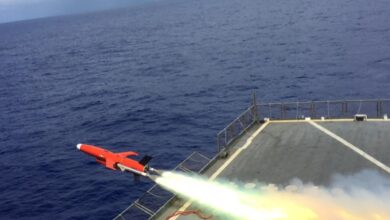Nigeria: More than 9,000 Sabon Gari residents relocated to Damboa, IOM says
The Nigerian Army reportedly enforced the relocation ahead of military operations against insurgents in the area
Nigeria’s army has relocated more than 9,000 people from Sabon Gari to Damboa in Borno state, the International Organization for Migration said on Tuesday, May 28.
There have been a number of insurgent attacks in the Sabon Gari area in recent weeks, and a military convoy transporting civilians to Damboa was ambushed on Friday.
“As of 27 May 2019, a total of 9,432 individuals from Sabon Gari community were moved by the military to Damboa town,” the IOM said in a release.
While around 1,400 people have basic shelter in tents or in school classrooms, more than 8,000 people are “staying in the open areas without shelters,” IOM said.
Damboa town is around 85 km (53 miles) southwest of Borno state capital Maiduguri, and Sabon Gari is around 50 km further southwest, towards Biu.
The army has previously relocated large numbers of civilians ahead of major military offensives, and sources told both AFP and Reuters that the people were being moved from their villages ahead of military operations against insurgents in the area, but the army has not yet confirmed that this is the case.
“Humanitarian partners were not informed or involved in the relocation,” the United Nations Office for the Coordination of Humanitarian Affairs said on May 23, adding that 7,710 people had by then been relocated by the military.
According to IOM, the 1,722 people who arrived between May 24 and 27 had “been coming on their own,” reportedly walking the 50 km from Sabon Gari to Damboa.
On May 24, fighters from the Islamic State West Africa Province faction of Boko Haram ambushed a convoy that was transporting civilians from Sabon Gari to Damboa.
Between five and 25 Nigerian soldiers reportedly died in the attack, but the Nigerian Army described those reports as “fake news” and denied there had been any attacks on military personnel in Borno state on Friday or Saturday.
ISIS claimed ISWAP fighters had “ambushed a Nigerian army force … between the towns of Sabon Gari and Damboa,” killing 15 soldiers and capturing three military trucks. An image that appeared to show six dead Nigerian soldiers was also released, along with other images that showed at least two trucks, 16 assault rifles and a small commercial quadcopter drone, all of which ISIS claimed had been captured.
ISWAP attacks in Sabon Gari
Friday’s ambush was the third ISWAP attack in the Sabon Gari area in recent weeks.
ISIS claimed ISWAP militants on April 13 attacked a checkpoint in Sabon Gari manned by army and militia personnel, saying that three were killed and others injured.
Two weeks later on April 26, ISWAP fighters again attacked Nigerian soldiers in the Sabon Gari area. ISIS claimed 10 soldiers were killed and another captured. Three days later, security sources told AFP at least five soldiers were killed and around 30 were missing.
The Nigerian military described reporting on April 26 incident as “unsubstantiated” and “fake,” saying it was “the handiwork of “Boko Haram sympathizers.” Colonel Ado Isa said there were “only minor casualty on own troops,” without specifying casualties.
The Nigerian military seldom comments on the ongoing counter-insurgency operations, and tends to downplay the insurgents’ effectiveness, rarely acknowledging engagements and seemingly understating military casualties and equipment losses.
The jihadist group known as Boko Haram began its bloody insurgency in northeastern Nigeria in 2009, but it has since spread into neighboring Niger, Chad and Cameroon, prompting a regional military response.
Since 2009, more than 27,000 people have been killed and two million others displaced, sparking a dire humanitarian crisis in the region. On April 30, the U.S. Ambassador-at-Large and Coordinator for Counterterrorism Nathan A. Sales said that the U.S. assesses that Boko Haram and ISWAP “have been responsible for over 35,000 deaths since 2011.”
Boko Haram split into two factions in mid-2016. One, led by long-time leader Abubakar Shekau, is notorious for suicide bombings and indiscriminate killings of civilians. Shekau pledged allegiance to ISIS leader Abu Bakr Al-Baghdadi in March 2015, but ISIS central only gives formal backing to the other faction, which it calls Islamic State West Africa Province.
The ISWAP faction, which largely focuses on attacking military and government targets, was led by Abu Mus’ab Al-Barnawi, but in March, audio recordings revealed that ISIS appointed Abu Abdullah Idris bin Umar, also known as Ibn Umar al-Barnawi, as leader. ISIS has not yet made a public statement confirming the change.
On May 22, ISIS released a video showing ISWAP attacks and the execution of nine people, including one tank crewman who was killed with a rocket-propelled grenade.
The Multinational Joint Task Force, a regional counter-insurgency force comprising personnel from Chad, Cameroon, Niger, and Nigeria, launched Operation Yancin Tafki on February 21 to battle the insurgents. It has said the cross-border operation is aimed at “making islands and other settlements in Lake Chad untenable for Boko Haram Terrorists.”
With reporting from AFP












